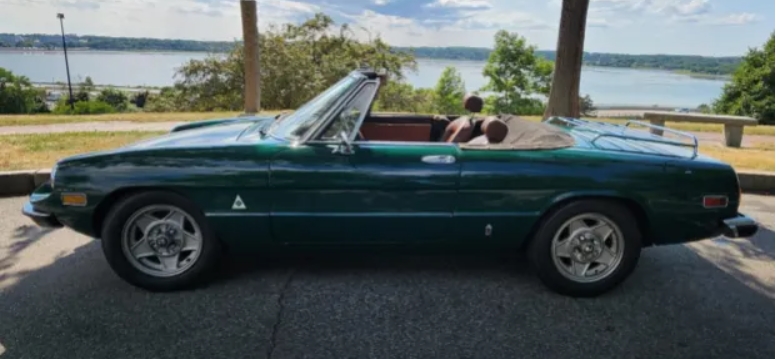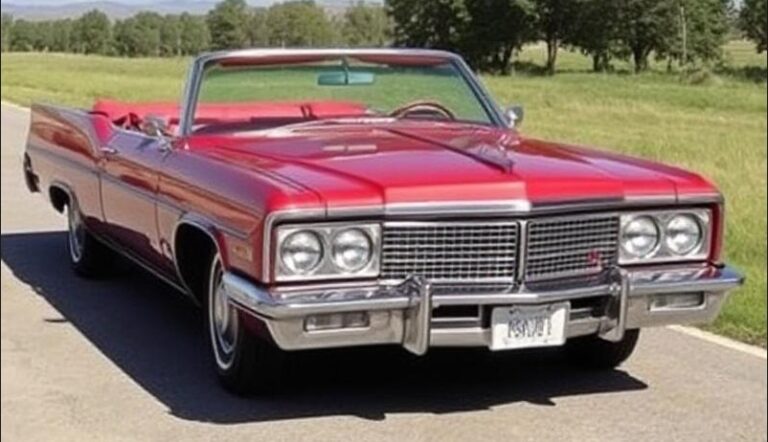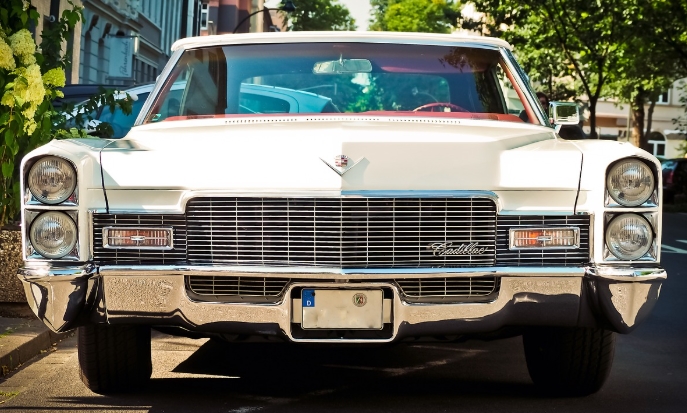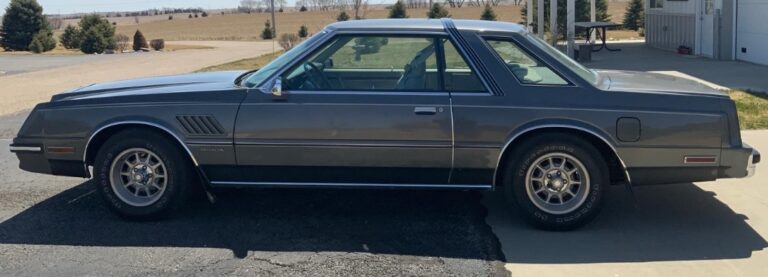Cuore Sportivo in Two Acts: The Evolution of the Alfa Romeo 2000
In the grand pantheon of automotive history, few names evoke as much passion, romance, and spirited driving pleasure as Alfa Romeo. Central to its storied legacy is the designation “2000,” a number that, rather than representing a single model, signifies two distinct and pivotal eras in the company’s evolution. The first was a post-war statement of luxury and grand touring ambition; the second, a perfection of the nimble, giant-killing sporting formula that came to define the brand. This is the story of the Alfa Romeo 2000, a tale told in two brilliant, yet fundamentally different, acts.
Act I: The Post-War Flagship – The 102 & 106 Series (1958-1962)
By the mid-1950s, Alfa Romeo had successfully transitioned from a pre-war builder of exotic racing machinery to a manufacturer of desirable production cars, largely thanks to the success of the 1900, famously marketed as “the family car that wins races.” To build on this, Alfa Romeo aimed higher, seeking to create a larger, more prestigious flagship model. The result was the 2000, designated Tipo 102, which debuted at the 1957 Turin Motor Show and entered production in 1958.
This was a car designed to compete with the likes of Lancia and Fiat’s more luxurious offerings. It was larger, heavier, and more comfortable than the outgoing 1900, representing a clear move upmarket. At its heart lay a new, robust 1975cc version of Alfa’s legendary twin-cam, inline-four engine. While sharing its architectural DNA with smaller Alfa engines, this unit was engineered for smooth, effortless torque rather than high-strung racing performance. The 102 Series 2000 was offered in three distinct body styles, each with its own unique character, crafted by Italy’s finest coachbuilders.
- 2000 Berlina (1958-1962)
The Berlina was the stately four-door saloon, the cornerstone of the range. Designed in-house by Alfa Romeo, its styling was conservative and substantial, featuring elegant ponton-style fenders, a prominent Alfa shield grille, and a spacious, well-appointed interior. It was a car for the discerning Italian industrialist or professional.
Under the bonnet, the 1975cc engine was fitted with a single Solex carburetor, producing a respectable 105 horsepower. This power was sent to the rear wheels via a 5-speed column-shift manual transmission, a feature that emphasized its role as a comfortable cruiser. While it upheld Alfa’s reputation for solid engineering, its sheer weight (around 1,400 kg) meant it was more of a swift grand tourer than a nimble sports saloon. Nevertheless, its sophisticated double-wishbone front suspension and well-located live rear axle provided confident and comfortable handling for its era. Approximately 2,893 units were produced.
- 2000 Spider by Touring (1958-1961)
If the Berlina was the sensible choice, the Spider was the heartthrob. Penned and constructed by the legendary Carrozzeria Touring of Milan, the 2000 Spider was a masterpiece of mid-century Italian design. Its flowing lines, elegant proportions, and twin front “nostrils” flanking the central grille gave it a look of timeless beauty and sophistication. Built using Touring’s famed Superleggera (super light) method, which involved wrapping an aluminum body over a lightweight tubular steel frame, it was lighter and more agile than its saloon sibling.
The engine was suitably upgraded for its sporting role. Fitted with twin Solex side-draft carburetors and a higher compression ratio, it produced an impressive 115 horsepower, making the Spider a genuinely quick car for its time. Paired with a floor-mounted 5-speed gearbox, it delivered the spirited performance and exhilarating open-air experience that Alfa enthusiasts craved. Its combination of breathtaking looks and enhanced performance makes it one of the most desirable post-war Alfa Romeos today. Production of the Touring-bodied Spider reached 3,443 units.
- 2000 Sprint by Bertone (1960-1962)
Arriving slightly later to the party, the 2000 Sprint was the elegant coupé of the family. The design was the work of a young Giorgetto Giugiaro during his tenure at Gruppo Bertone, and it previewed many of the design cues that would define Italian GT cars for the next decade. Its clean, sharp lines, expansive glasshouse, and distinctive quad-headlight front end gave it a modern, athletic stance.
Sharing the more powerful 115 hp twin-carb engine and 5-speed floor-shift transmission with the Spider, the Sprint was a consummate grand tourer. It blended the performance of the Spider with the comfort and all-weather usability of a closed coupé. Its poised handling and long-legged cruising ability made it the perfect machine for traversing Alpine passes or speeding down the autostrada. Only 704 examples of this stunningly beautiful coupé were ever built, making it the rarest of the 102 Series trio.
By 1962, the 102 Series was phased out, replaced by the six-cylinder 2600 (Tipo 106), which used the same basic bodies but featured a more powerful engine. The first act of the “2000” was over, leaving a legacy of beautiful, well-engineered, but perhaps slightly too conservative cars for Alfa’s core identity.
Act II: The Sporting Zenith – The 105 & 115 Series (1971-1977)
After a near-decade-long hiatus, the “2000” designation returned to the Alfa Romeo lineup in 1971. This time, however, it did not signify a standalone model range. Instead, it represented the ultimate and most powerful evolution of the beloved Giulia-based 105 Series family of cars. The 105 Series, introduced in the early 1960s, had already established itself as the benchmark for sporting saloons, coupés, and spiders. The arrival of the 2-litre engine marked the platform’s glorious zenith.
The engine itself was a masterpiece. Officially displacing 1962cc, the Alfa Romeo Twin Cam was a jewel of an engine, renowned for its free-revving nature, sonorous exhaust note, and impressive power output. In European trim with twin Dell’Orto or Weber carburetors, it produced a potent 132 horsepower. This new engine was placed into the three core 105 Series bodies, creating a new top-tier trim level for each.
- 2000 Berlina (1971-1977)
The 2000 Berlina replaced the highly respected 1750 Berlina as Alfa’s premier sports saloon. While sharing its core bodyshell with the 1750, it was distinguished by several key styling updates. A new grille with a horizontal chrome bar motif, a redesigned dashboard and centre console, and larger, rectangular rear light clusters gave it a more modern and imposing look.
The combination of the powerful 132 hp engine with the Berlina’s lightweight and superbly balanced chassis created one of the world’s first true “Q-cars.” It was a discreet four-door saloon that could humble many dedicated sports cars of its day. A limited-slip differential became standard, helping to effectively transmit power to the road. This was the car for the enthusiast with a family, a vehicle that offered practicality without compromising on the sheer joy of driving that defines an Alfa Romeo. Over 89,000 units were produced, a testament to its success.
- 2000 Gran Turismo Veloce (GTV) (1971-1976)
Arguably the most iconic of the 1970s 2000 models, the 2000 GTV was the final and finest iteration of Giorgetto Giugiaro’s stunning Bertone coupé design. It replaced the 1750 GTV and featured several distinct visual cues. The front end was updated with a new grille featuring horizontal chrome slats and a larger Alfa shield that extended through the bumper line. The “step-front” of the earliest GT Juniors was long gone, but the shape remained breathtaking. At the rear, larger tail light clusters modernized the look.
Inside, the 2000 GTV received a new instrument panel and unique seats with distinctive flying-buttress-style removable headrests. But the real magic was the driving experience. The 1962cc engine transformed the already brilliant GTV chassis into a world-class performance car. With a top speed approaching 125 mph and razor-sharp handling, it was a pure, unfiltered driver’s machine. The wail of the twin-cam engine, the precise feel of the five-speed gearbox, and the chassis’s perfect poise made every journey an event. The 2000 GTV is widely considered the most desirable of all the 105 Series coupés and a true collector’s item, with around 37,000 built.
- 2000 Spider Veloce (1971-1982)
The timeless Pininfarina-designed Spider, which had started life as the “Duetto” in 1966, also received the 2-litre treatment. By this point, the original rounded “boat-tail” rear had been replaced by the truncated “Kamm tail” Coda Tronca design, which improved aerodynamic stability. The 2000 Spider Veloce became the top-of-the-range model.
Like its siblings, the primary upgrade was the energetic 1962cc engine, which endowed the lightweight roadster with scintillating performance. The blend of open-top motoring, gorgeous Italian styling, and the intoxicating sound of the twin-cam engine created a near-perfect sports car experience. For the US market, these models were fitted with SPICA mechanical fuel injection to meet emissions regulations, slightly altering the power delivery but retaining the car’s essential character. The 2000 Spider Veloce enjoyed a long production run, cementing its status as an automotive icon.
.
Many car aficionados have multiple hobbies, like boating as well as auto stuff. Those who don’t already own a boat (and even some that do), may have thought about building their own boats. It’s really not as hard as you’d think. Just take a look at these easy boat building plans!

.
The Enduring Legacy
The two acts of the Alfa Romeo 2000 tell the story of a company in transition. The 102 Series of the late 1950s was a confident, ambitious step into the premium market, showcasing Italy’s finest coachbuilding and engineering traditions in a luxurious package. The 105 Series of the 1970s was the perfection of a different philosophy: lightweight construction, a high-performance twin-cam engine, and sublime handling dynamics, all packaged for the driving enthusiast.
Though separated by a decade and a shift in corporate strategy, both series carrying the “2000” badge embodied the core Alfa Romeo principle of cuore sportivo—the sporting heart. Whether in a grand touring Spider by Touring or a nimble GTV by Bertone, the name “2000” has consistently signified a premier Alfa Romeo driving experience, leaving behind a legacy of beautiful, engaging, and unforgettable automobiles.







